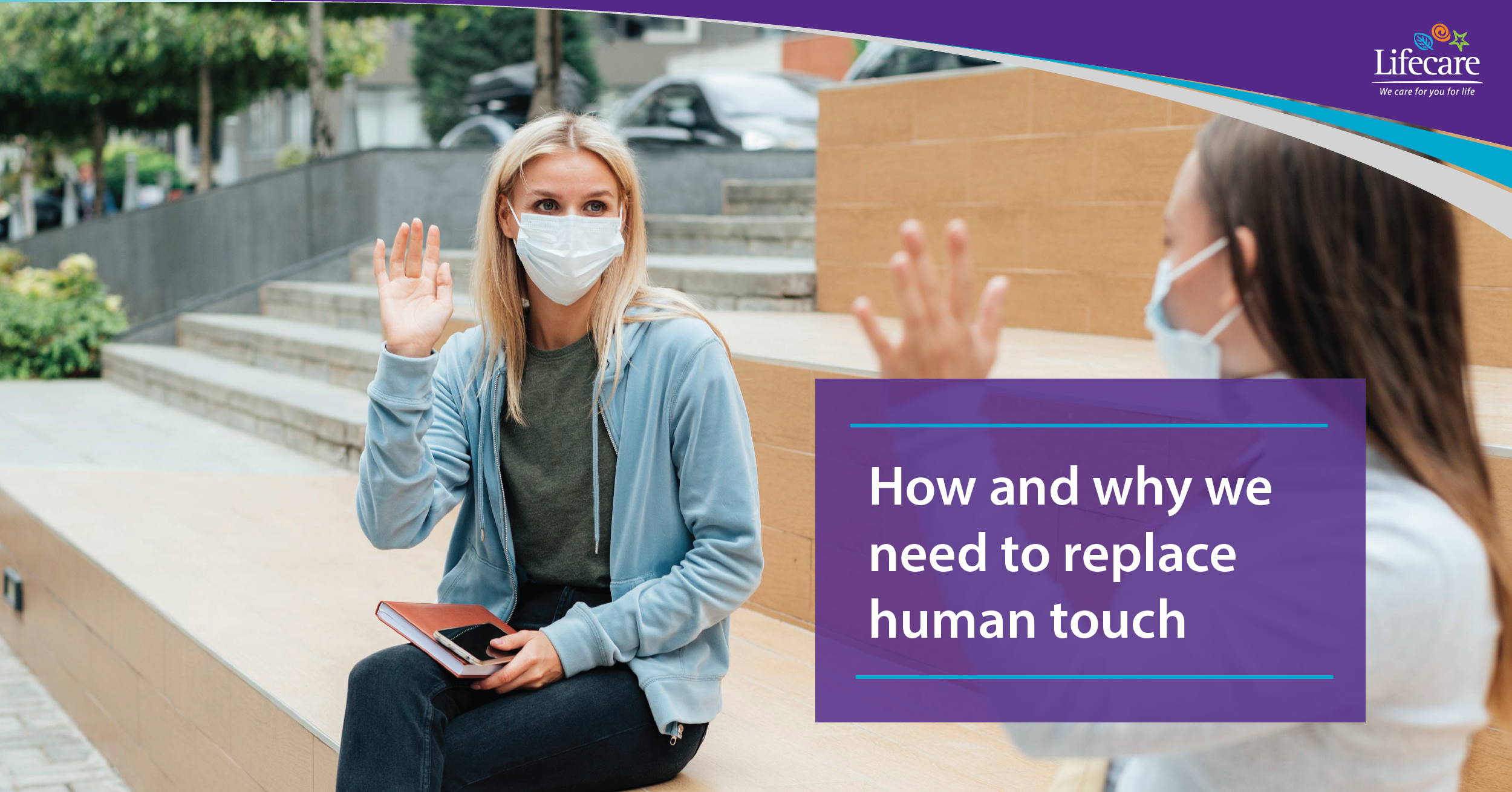The pandemic has left us actively avoiding contact, starving our bodies of a basic human need. Lifecare looks at ways to fill the void social distancing has left behind
The increasing digital age had already replaced physical interaction on so many levels before COVID-19 descended on the world. Scrolling for groceries and gifts and celebrating our friends with likes and comments has been commonplace this side of the millennium, and subsequently studied for its psychological impact, but enforced social distancing and fear of infection has now made us wary of human touch. So, what does that mean?
Touch deprivation and its real effects
“When someone is touch starved, it’s like someone who is starved for food,” explains Dr Asim Shah, professor and executive vice chair of the Menninger Department of Psychiatry at Baylor College of Medicine. “They want to eat, but they can’t. Their psyche and their body want to touch someone, but they can’t do it because of the fear associated.”
Touch starvation increases stress, depression and anxiety, triggering a cascade of negative physiological effects. The body releases the ‘stress hormone’ cortisol whenever it feels threatened or uncertain, activating a ‘flight-or-fight’ survival mode response. This can increase heart rate, blood pressure, respiration and muscle tension – suppressing the digestive and immune systems and increasing the risk of infection.
“Every single medical disease, including heart attack, diabetes, hypertension and asthma, is altered if you are more anxious, more depressed or if you have more mental health issues,” continues Dr Shah, confirming just how big the repercussions can become.
With all the scientific evidence to solidify the importance of human touch, how can we help ourselves in a world where shaking hands, high-fives and pats on the back are now out of our comfort zone?
Don’t avoid interaction altogether
Wearing a mask and staying socially distant in our day-to-day activities can make us shy away. Make a conscious effort to nod, wave, laugh and show expression through your eyes to the people you come across. It will boost both your moods!
Change your online meeting agenda
We’re all used to online meetings by now, but how do you start them? Professor of economics, psychology and management at Claremont Graduate University, Paul Zak, suggests we break down barriers and get the ‘happy hormone’ oxytocin flowing by allocating five minutes at the start of the session to chat on a personal level.
“You can facilitate that oxytocin release and reduction of anxiety if you make an effort to connect to the person you’re talking to,” he says. “Taking the time just to ask them how they’re feeling is a pretty effective way to build an emotional connection.”
Give yourself a big hug
There are lots of ways to give your body the reassurance it requires, without the need for another human being! Take a little longer doing day-to-day things like washing your face and hair and applying moisturiser, start skin brushing, and invest in a weighted blanket to feel wonderfully cocooned.
Yoga is also a fantastic way for the body to feel connected, incorporating poses where our arms, legs, back, front and head have contact with a mat or floor, which provide the same benefits as touch.
Lifecare members have access to a wide spectrum of support options and expert webinars to assist with mind-body connection and the path to wellness, including meditation and mindfulness sessions. To find out more on how to access such programs, contact us by email privilegedesk@lifecareinternational.com or click here.
Source: Baylor College of Medicine, Claremont Graduate University

